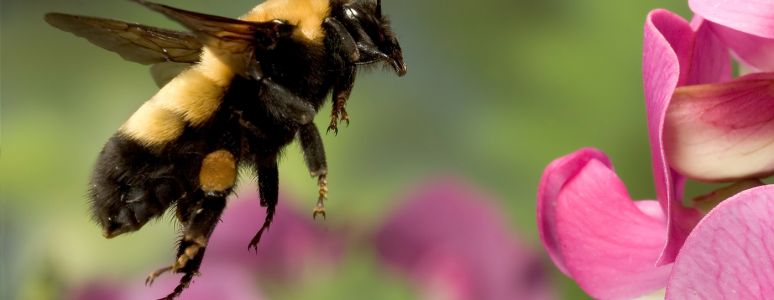How bumblebee friendly is your garden?

Tue 23 Mar 2021
A picnic in the park. Sitting on the grass, eating sandwiches and listening to the sound of bees buzzing in the borders. Simple things that we’re really missing at the moment.
While many of us are stuck at home, newly awakened bumblebee queens are hard at work, collecting pollen and nectar to feed their young. They have woken up from a long winter sleeping underground while they waited for this warm spring weather and the flowers it brings. As they weave their way from flower to flower, they carry the pollen that allows those plants to fruit and set seed – creating the tapestry of flowers that covers our gardens and countryside, providing food and shelter for us and for wildlife - as well as a feast for the eyes.
Now as never before we are aware how every minute outside is precious – and while we can’t take as long as we’d like to watch the bumblebees while we’re out for our daily exercise, we can keep our eyes and ears open for them: you’ll hear them before you see them – their loud buzz is why we call them ‘the sound of summer’. If you take your exercise in the park, keep an eye out for our fuzzy friends – who knows, if you’re lucky you may even see a really big bumblebee queen!
But if you can’t get to the park, you can still keep an eye on bumblebees without leaving your home – of the twenty-four different species of bumblebees native to this country, seven are commonly found in gardens. You can find out more about their fascinating lives and how to tell them apart at the Bumblebee Conservation Trust website – www.bumblebeeconservation.org – you’ll also find lot of bumblebee activities there to keep you busy.
And for those of you who are using this time to get a spot of gardening done, the ‘Bee kind’ tool will give you a score for how bumblebee-friendly your garden is – from a window box to a large garden - and suggest how you can improve it (https://beekind.bumblebeeconservation.org). Bumblebees use up lots of energy flying and need to top up with nectar every 40 minutes – but one small bumblebee-friendly flower in a pot is enough – so we can all help keep our bumblebees moving.
Remember, these strange days won’t last forever. And when the time comes, we’ll be able to walk out together and see the work that bumblebees have been doing while we were locked down in our houses – in the summer flowers or the autumn fruit in the hedgerows…
And we’re hoping we’ll have a chance to get together in the park and celebrate our bumblebees before the queens go into hibernation again in the autumn – let’s hope we’ll see you there!

